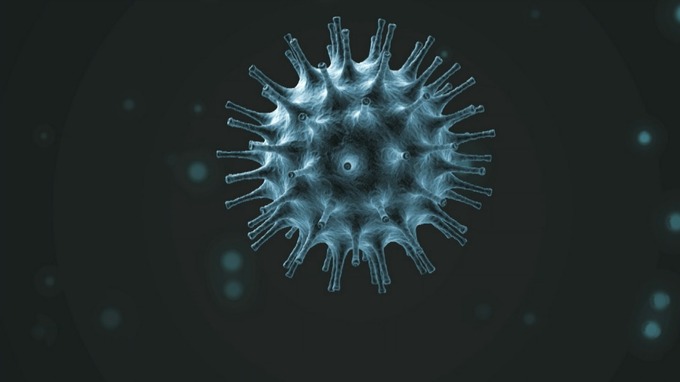
Coronavirus: Symptoms, Transmission and all you need to know
 On the last day of last year, Chinese health authorities have reported a string of some infections in Wuhan. What followed was still a mystery. The reports on the number of infected people swiftly rose and adding to these, isolated cases of the infection appeared in other countries as well! The root cause of the infection was unknown and the researchers at first thought, it is the SARS virus. But the recent cluster of pneumonia cases in Wuhan, China, was caused by a novel beta coronavirus, the 2019 novel coronavirus (2019-nCoV). At present, around 9700 cases of coronavirus have been confirmed and over 213 people have been dead.
On the last day of last year, Chinese health authorities have reported a string of some infections in Wuhan. What followed was still a mystery. The reports on the number of infected people swiftly rose and adding to these, isolated cases of the infection appeared in other countries as well! The root cause of the infection was unknown and the researchers at first thought, it is the SARS virus. But the recent cluster of pneumonia cases in Wuhan, China, was caused by a novel beta coronavirus, the 2019 novel coronavirus (2019-nCoV). At present, around 9700 cases of coronavirus have been confirmed and over 213 people have been dead.
What is Coronavirus?
According to a study published in the Lancet, coronaviruses are enveloped non-segmented positive-sense RNA viruses belonging to the family Coronaviridae and the order Nidovirales and broadly distributed in humans and other mammals. The study also adds that Although most human coronavirus infections are mild, the epidemics of the two beta coronaviruses, severe acute respiratory syndrome coronavirus (SARS-CoV) and Middle East respiratory syndrome coronavirus (MERS-CoV), have caused more than 10 000 cumulative cases in the past two decades, with mortality rates of 10% for SARS-CoV and 37% for MERS-CoV. The coronaviruses already identified is just a start as per the study, with potentially more novel and severe zoonotic events to be revealed.
The Transmission
The coronavirus is adapting and mutating, which makes the virus spread faster and possibly more difficult to treat.
The scientists are still confused about the exact details on the transmission of the virus. For example, the first infections were detected in the Chinese city of Wuhan and traced back to a wild animal and fish market, which has now been shut down. The virus might have been transmitted through direct contact between humans and animals, or simply via the air like many germs. A study published in the New England Journal of Medicine also has evidence for human-to-human transmission occurred among close contacts since the middle of December 2019.
Symptoms
The most common symptoms at the onset of illness were fever, fatigue and cough according to the Lancet study. Less common symptoms were sputum production, headache, haemoptysis and diarrhoea. Elderly citizens tend to be more often affected by the virus than younger people.
How to treat- Guidelines for Health Professionals
The Information available to characterize the spectrum of the clinical illness associated with 2019-nCoV is limited. The care supportive since no vaccine or specific treatment for coronavirus infection is available.
The Centres for Disease Control and Prevention has developed based on what is known about MERS-CoV and SARS-CoV and are subject to change as additional information becomes available.
For example, the patients who meet the following criteria should be evaluated as Patients Under Investigation(PUI) for the coronavirus. This is intended to serve as guidance or evaluation.
- Fever or signs/symptoms of lower respiratory illness (e.g. cough or shortness of breath) and any person, including health care workers, who have had close contact with a laboratory-confirmed 2019-nCoV patient within 14 days of symptom onset.
- Fever and signs/symptoms of a lower respiratory illness (e.g., cough or shortness of breath) and a history of travel from Hubei Province, China within 14 days of symptom onset.
- Fever and signs/symptoms of a lower respiratory illness (e.g., cough or shortness of breath) requiring hospitalization and a history of travel from mainland China within 14 days of symptom onset.
When to worry?
If you’ve never been in close contact with someone who has the coronavirus, you’re likely to be safe. Though the exact mode of transmission of the coronavirus is still unclear, it usually spreads through droplets containing large particles that typically can only be suspended in the air for three to six feet before dissipating. So, according to a Harvard study, it’s likely that coughs or sneezes from an infected person may spread the virus. It’s too early to say whether another route of transmission, faecal-oral contact, might also spread this particular virus.
Safety Measures
The basic infectious disease principles are the only way to curb the spread of coronavirus. Wash your hands regularly. Cover coughs and sneezes. Avoid touching your eyes, nose, or mouth with your hands. Stay home from work or school if you have a fever. Stay away from people who have signs of a respiratory tract infection, such as the runny nose, coughing, and sneezing.
When visiting live markets in areas currently experiencing cases of a novel coronavirus, avoid direct unprotected contact with live animals and surfaces in contact with animals. The consumption of raw or undercooked animal products should be avoided. Raw meat, milk or animal organs should be handled with care, to avoid cross-contamination with uncooked foods, as per good food safety practices.
As the virus continues to spread, the first thing one can do is not to panic. Since we already have dealt with other deadly viruses like SARS and MERS, we can take the lessons learnt from that also. Remember, it’s time for being extra-cautious, not panic-stricken.
Source: https://www.nejm.org/doi/full/10.1056/NEJMoa2001316?query=TOC
https://www.thelancet.com/journals/lancet/article/PIIS0140-6736(20)30183-5/fulltext
https://www.dw.com/en/coronavirus-everything-you-need-to-know/a-52102486
https://www.health.harvard.edu/blog/the-new-coronavirus-what-we-do-and-dont-know-2020012518747
https://www.cdc.gov/coronavirus/2019-ncov/hcp/clinical-criteria.html?CDC_AA_refVal=https%3A%2F%2Fwww.cdc.gov%2Fcoronavirus%2F2019-ncov%2Fclinical-criteria.html
Image: ITV